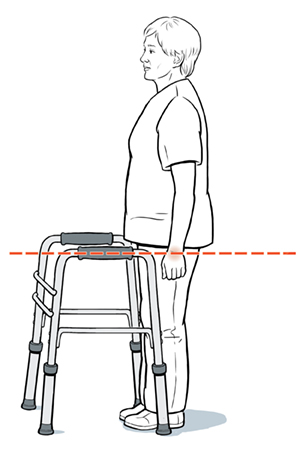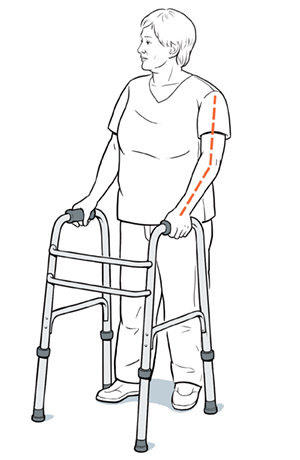Fitting Your Walker
Proper fitting helps you use your walker safely and effectively. When fitting your walker, stand up straight and wear the shoes you'll normally use to walk. If your walker doesn’t feel right, ask your healthcare provider, nurse, or physical therapist (PT) to check the fit.
Getting to know your walker
A walker is often used for injuries involving the leg or hip. It may also be used for nerve or muscle problems that affect balance. A walker gives more stability than crutches. Some walkers have wheels, others don't. Your healthcare provider will help you choose the best type of walker for your needs. Follow any special instructions you are given.
A walker fits if:


Follow these safety steps
-
If your walker doesn't have wheels, it should have nonskid rubber tips to prevent slipping. Change tips that look worn or become uneven.
-
If your walker has wheels, talk with your healthcare provider or PT if the walker doesn't have a smooth glide.
-
If you're using a folding walker, be sure you know how to lock it open. Check that it’s locked open before use.
-
Keep all 4 legs of the walker at the same length.
-
Wear shoes with non-skid or rubber soles.
-
Don't wear shoes with heels or leather soles.
-
Keep your back straight. Don’t hunch over the walker.